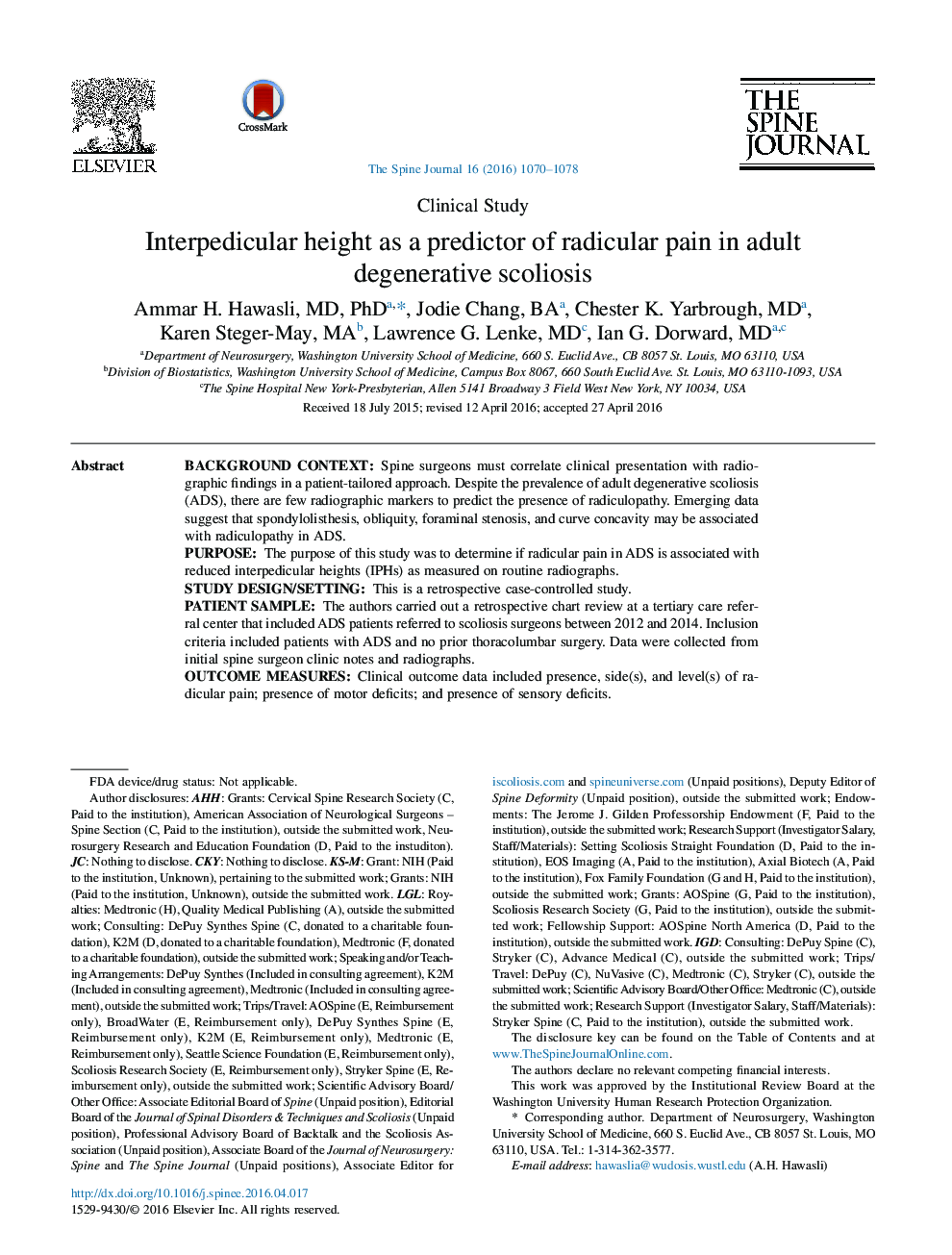| Article ID | Journal | Published Year | Pages | File Type |
|---|---|---|---|---|
| 4095726 | The Spine Journal | 2016 | 9 Pages |
Background ContextSpine surgeons must correlate clinical presentation with radiographic findings in a patient-tailored approach. Despite the prevalence of adult degenerative scoliosis (ADS), there are few radiographic markers to predict the presence of radiculopathy. Emerging data suggest that spondylolisthesis, obliquity, foraminal stenosis, and curve concavity may be associated with radiculopathy in ADS.PurposeThe purpose of this study was to determine if radicular pain in ADS is associated with reduced interpedicular heights (IPHs) as measured on routine radiographs.Study Design/SettingThis is a retrospective case-controlled study.Patient SampleThe authors carried out a retrospective chart review at a tertiary care referral center that included ADS patients referred to scoliosis surgeons between 2012 and 2014. Inclusion criteria included patients with ADS and no prior thoracolumbar surgery. Data were collected from initial spine surgeon clinic notes and radiographs.Outcome MeasuresClinical outcome data included presence, side(s), and level(s) of radicular pain; presence of motor deficits; and presence of sensory deficits.MethodsVariables included age, gender, Scoliosis Research Society-30 (SRS-30) and Oswestry Disability Index (ODI) questionnaire data, and radiographic measurements. Radiographic measurements included Cobb angles and L1 to S1 IPHs on upright and supine radiographs. Associations between variables and outcome measures were assessed with univariate and multivariate statistical analyses. Authors have no conflicts of interests relevant to this study.ResultsA total of 200 patients with an average age of 51 years met the inclusion criteria. Sixty of the 200 patients presented with radicular pain. Older age was associated with radicular pain, weakness, and sensory deficits. Patients who were 55 years or older were approximately eight times more likely to have radicular pain (odds ratio [OR]=7.96, 95% confidence interval [CI]: 3.73, 17.0; p<.001), five times more likely to have motor deficit (OR=5, 95% CI: 2.55, 9.79; p<.001), and five times more likely to have sensory deficit (OR=5.2, 95% CI: 2.65, 10.2; p<.001) than those younger than 55. More caudally located nerve roots are more likely to develop radicular pain (p<.001). Motor deficits were associated with worse SRS-30 functional (p=.02) and ODI scores (p=.005), but radicular pain and sensory deficits were not associated with lower SRS-30 or ODI scores. Ipsilateral and same-level radicular pain were associated with reduced IPH on supine radiographs (p=.002 and p=.0002, respectively). Finally, reduced IPH on upright radiographs was associated with side- and level-specific radicular pain (p=.04).ConclusionsRadicular pain in ADS patients is associated with reduced IPHs and older age. Measuring IPHs on routine radiographs may be helpful in associating clinical radiculopathy with radiographic measures to guide patient management and surgical planning.
